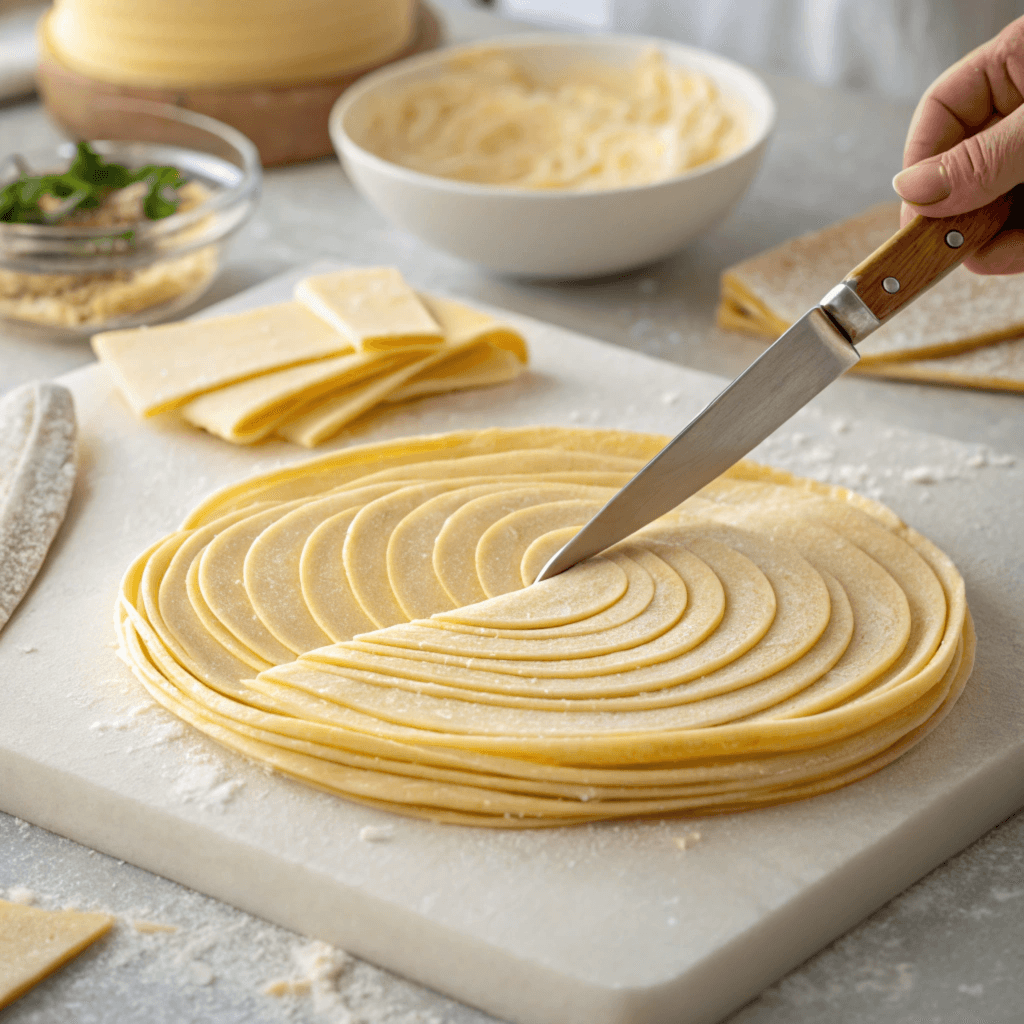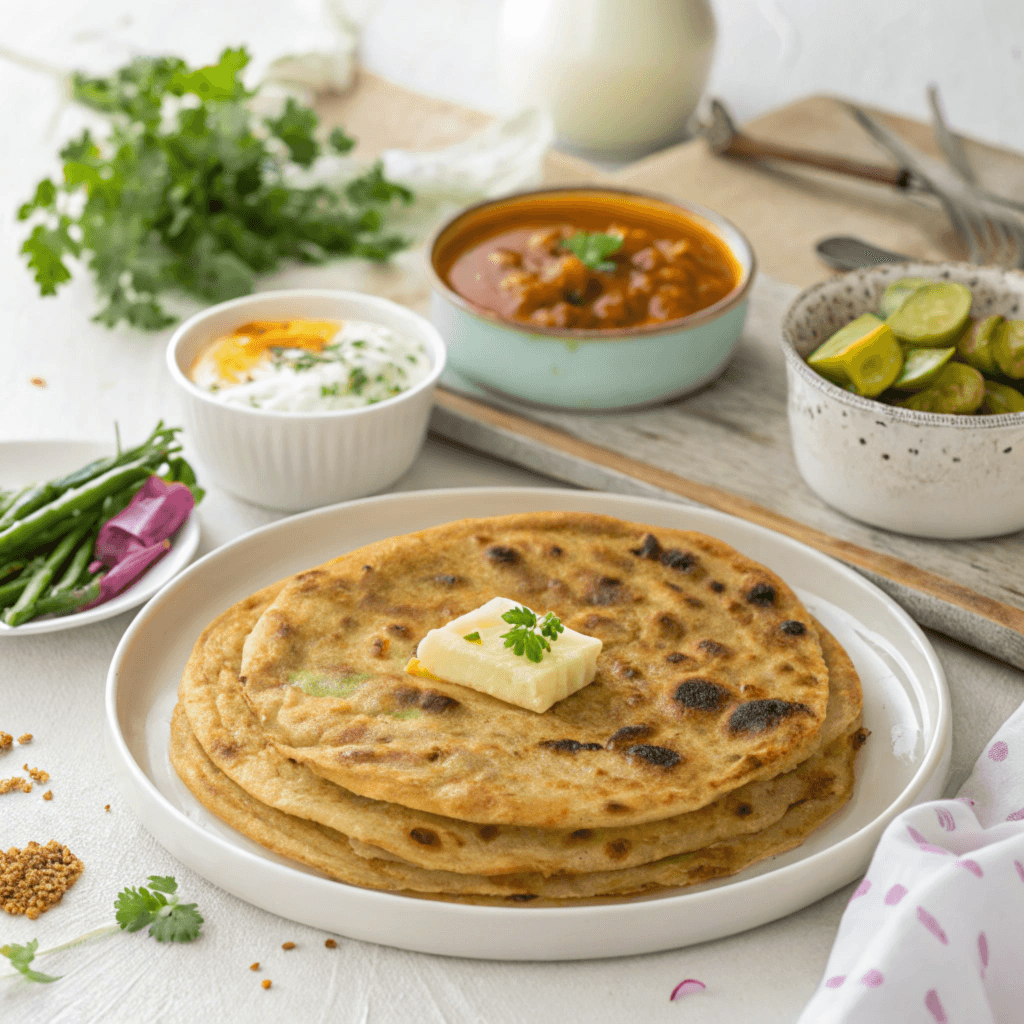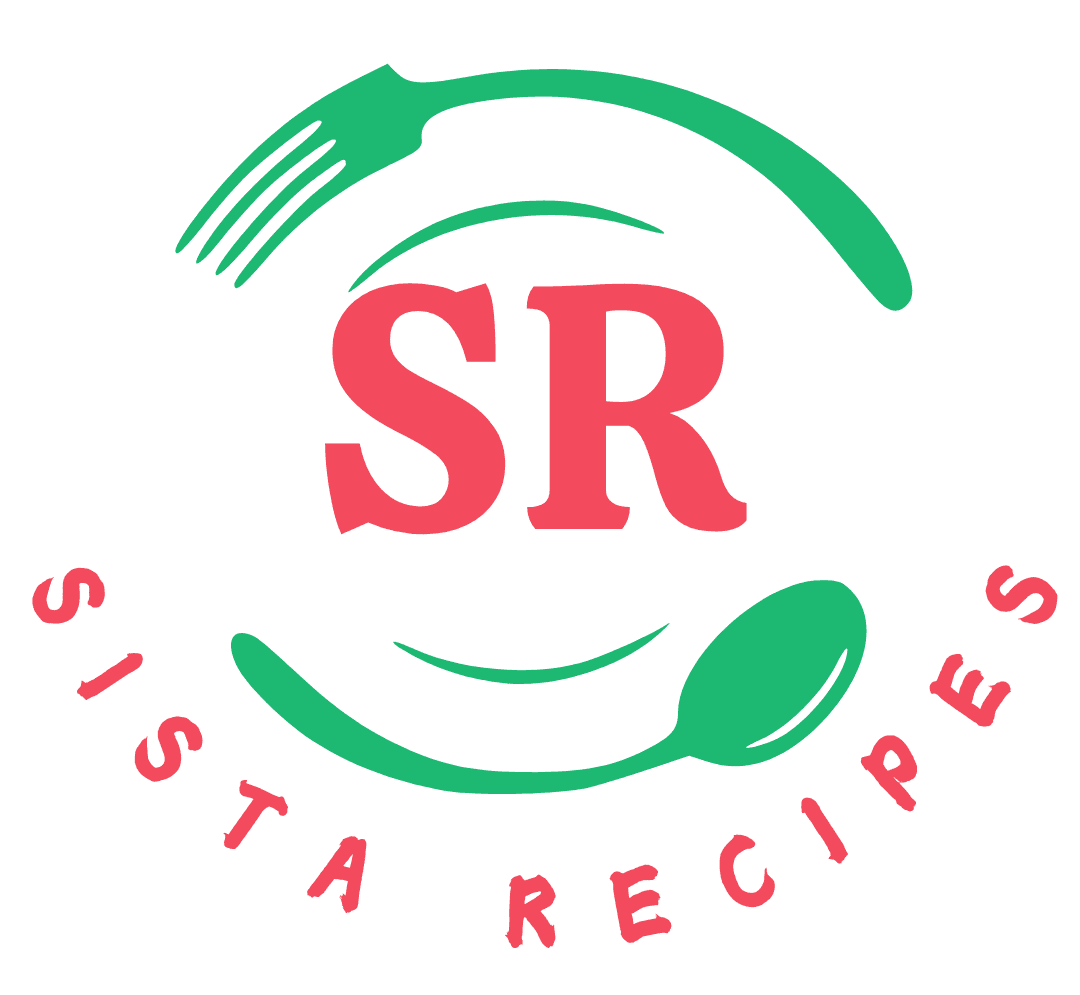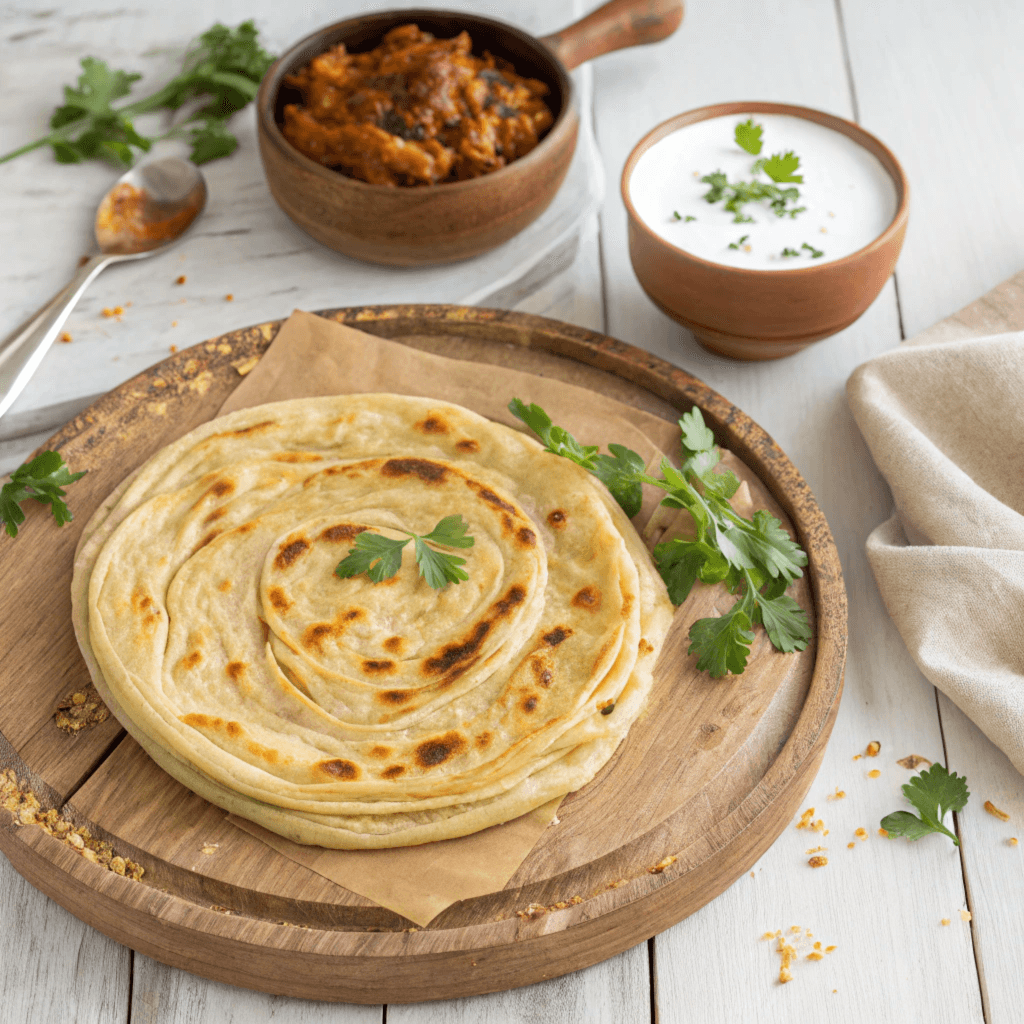Introduction
The irresistible charm of lacha paratha makes it a favorite among bread lovers worldwide. Not only is it known for its flaky layers and buttery texture, but this Indian flatbread also pairs beautifully with a variety of dishes. Although the process of crafting this delicacy might seem complex, with the right approach, anyone can recreate its authentic taste. Therefore, this article serves as a comprehensive guide to help you master the art of making lacha paratha at home. If you’ve ever enjoyed dishes like the Pepper Lunch Recipe, you’ll understand the joy of indulging in perfectly crafted meals that bring both tradition and flavor to the table.
Originating from the Indian subcontinent, lacha paratha has become a beloved staple in South Asian cuisine. Furthermore, its unique texture and flavor have earned it a place on tables around the globe. Despite its seemingly intricate preparation, the steps involved are straightforward with a bit of practice and patience. Indeed, the satisfaction of tearing into the crispy, flaky layers of a freshly made lacha paratha is unmatched, making the effort well worth it.
The secret to the perfect lacha paratha lies in its distinct layers, which are achieved through meticulous rolling and layering techniques. Moreover, the use of ghee or clarified butter enhances its richness, while the simple yet essential ingredients ensure a burst of flavor in every bite. Whether it is served with curries, pickles, or yogurt, this bread elevates any meal to a gastronomic delight. In this guide, we will delve into its origins, ingredients, and preparation process, ensuring you gain a thorough understanding of every step involved. With the right tips and techniques, you can confidently bring the authentic taste of lacha paratha to your home kitchen, impressing family and friends alike.
What is Lacha Paratha?
Lacha paratha is a traditional South Asian bread celebrated for its multilayered texture and rich flavor. Originating from the Indian subcontinent, this flatbread’s uniqueness lies in its layers, which are achieved through meticulous rolling techniques. Similar to how recipes like the Chicken Taco Soup balance ingredients for perfection, lacha paratha showcases the harmony of simplicity and skill.
Unique Features of Lacha Paratha
Achieving the paratha’s flaky texture involves a series of precise folding and rolling techniques that give it its signature appearance. Unlike regular flatbreads, lacha paratha incorporates ghee or oil between its layers, resulting in a crisp and buttery finish. Cooks typically prepare it on a hot skillet until it turns golden brown, showcasing its delightful layers.
Key attributes of lacha paratha include:
- Flaky and crispy layers
- A buttery aroma and taste
- Versatility in pairing with different cuisines
Whether you enjoy it with spicy curries or use it to scoop up lentils, lacha paratha consistently impresses as a flavorful and versatile bread.
This paratha’s flaky texture is achieved through a series of folding and rolling techniques that create its signature appearance. Unlike regular flatbreads, lacha paratha incorporates ghee or oil between the layers, which results in a crisp and buttery finish. It is typically cooked on a hot skillet until golden brown, showcasing its delightful layers.
Key attributes of lacha paratha include:
- Flaky and crispy layers
- A buttery aroma and taste
- Versatility in pairing with different cuisines
Whether you’re enjoying it with spicy curries or using it to scoop up lentils, lacha paratha is a bread that never fails to impress.
Ingredients for Lacha Paratha
The beauty of lacha paratha lies in its simplicity. Despite its complex appearance, the ingredient list is short and straightforward. To achieve authentic results, it is important to use fresh and high-quality ingredients.
Essential Ingredients:
- All-purpose flour (2 cups): Provides the perfect structure and elasticity for layering.
- Salt (1 teaspoon): Enhances the flavor.
- Warm water (as needed): Helps in forming a smooth and pliable dough.
- Ghee or clarified butter (4 tablespoons): Adds richness and aids in creating the layers.
- Vegetable oil (1 tablespoon): Prevents sticking and facilitates rolling.
Optional Ingredients:
- Whole wheat flour (1 cup): For a healthier version, substitute part of the all-purpose flour.
- Milk (2 tablespoons): Adds softness to the dough.
- Butter (for brushing): Enhances the crispiness of the cooked paratha.
Having these ingredients on hand ensures you can whip up a batch of lacha paratha whenever the craving strikes.
Optional ingredients like whole wheat flour can elevate the nutritional value, much like the tweaks in healthier recipes like the California Chicken Breakfast Burrito.
Preparing the Dough for Lacha Paratha
The dough forms the foundation of lacha paratha. A well-kneaded dough ensures elasticity and softness, which are essential for creating its layers. Here is a step-by-step guide to preparing the perfect dough.
- Combine the dry ingredients: In a large mixing bowl, add the all-purpose flour and salt. Mix well to ensure even distribution.
- Add liquid gradually: Slowly pour warm water into the flour mixture while stirring continuously. This prevents lumps from forming.
- Incorporate ghee: Add a tablespoon of ghee into the mixture to enhance the dough’s richness and elasticity.
- Knead the dough: Use your hands to knead the dough for 8-10 minutes until it becomes smooth and pliable. If the dough feels too sticky, sprinkle a small amount of flour.
- Rest the dough: Cover the dough with a damp cloth and let it rest for 30 minutes. This step allows the gluten to relax, making it easier to roll out.
Properly prepared dough is soft, elastic, and easy to work with, ensuring that your lacha paratha turns out perfect every time.

Rolling and Layering Techniques
The hallmark of lacha paratha lies in its rolling and layering methods. These steps may require practice, but the results are well worth the effort. Here is how you can achieve the characteristic flakiness.
- Divide the dough: After resting, divide the dough into equal portions and shape them into balls. Each ball will yield one paratha.
- Roll out the dough: Dust a rolling surface with flour and roll out a ball into a thin circle, approximately 10 inches in diameter.
- Apply ghee: Generously brush ghee over the entire surface of the rolled-out dough.
- Fold and roll: Using a sharp knife, make vertical cuts on the dough, creating thin strips. Stack the strips over each other to form a thick rectangle. Roll this rectangle into a coil and flatten it slightly with your hand.
- Final rolling: Roll the coiled dough into a circle once more, maintaining the layers.
- Cook on a skillet: Heat a skillet and cook the paratha until golden brown on both sides, brushing it with ghee during the process.
Cooking Lacha Paratha
Cooking lacha paratha requires patience and attention to detail. To ensure evenly cooked layers with a golden-brown finish, follow these steps:
- Preheat the skillet: Use a heavy-bottomed skillet or tawa and heat it over medium flame. The skillet should be hot enough to sizzle a drop of water.
- Place the paratha: Carefully transfer the rolled-out paratha onto the hot skillet.
- Cook the first side: Let the paratha cook for 30-40 seconds until bubbles start to form.
- Flip and apply ghee: Turn the paratha over and brush the cooked side with ghee. Cook for another 30-40 seconds.
- Flip again and repeat: Turn the paratha once more, applying ghee to the other side. Press gently with a spatula to ensure even cooking.
- Cook until golden: Continue flipping and pressing until both sides are golden brown and crisp.
Serve the lacha paratha hot to enjoy its full flavor and flaky texture.
Serving Suggestions
Lacha paratha is a versatile bread that complements various dishes. Here are some serving ideas to enhance your dining experience:
- With curries: Pair lacha paratha with rich and flavorful curries like butter chicken, paneer tikka masala, or dal makhani.
- As a wrap: Use lacha paratha as a base for wraps, stuffing it with grilled vegetables, kebabs, or spicy chicken.
- With chutneys: Serve alongside mint chutney, tamarind sauce, or spicy pickle for a tangy kick.
- With yogurt: Enjoy a lighter option by pairing it with plain or spiced yogurt.
For a complete meal, combine lacha paratha with a side salad and refreshing beverages like lassi or buttermilk.
Nutritional Value of Lacha Paratha
While lacha paratha is a treat for the taste buds, it is essential to understand its nutritional profile. Here is a breakdown of its typical content per serving:
- Calories: Approximately 200-250
- Carbohydrates: 30-35 grams
- Protein: 4-5 grams
- Fat: 8-12 grams (depending on the amount of ghee used)
- Fiber: 2-3 grams

Tips for Healthier Options:
- Use whole wheat flour instead of all-purpose flour to increase fiber content.
- Opt for minimal ghee or use a healthier alternative like olive oil.
- Pair with nutrient-rich side dishes to balance the meal.
Moderation is key when enjoying this indulgent bread as part of a balanced diet.
Frequently Asked Questions (FAQs)
What is Lachha Paratha made of?
Lachha Paratha is a delicious and flaky Indian flatbread made using simple ingredients like whole wheat flour (atta), water, salt, and ghee or oil. The dough is kneaded to a soft consistency, rolled out thin, layered with ghee, and folded multiple times to create its characteristic flaky texture. Some variations may include optional ingredients such as carom seeds (ajwain), cumin, or chopped herbs to enhance its flavor. It is then cooked on a hot griddle or tawa until golden and crisp.
What is the difference between Paratha and Lachha Paratha?
The main difference between Paratha and Lachha Paratha lies in their texture and preparation method. A regular paratha is a simple flatbread that is either plain or stuffed, with a relatively uniform texture throughout. On the other hand, Lachha Paratha is known for its signature flaky and layered structure, achieved through a specific rolling and folding technique.
Is Lachha Paratha unhealthy?
Lachha Paratha can be high in calories and fat because of the generous use of ghee or oil, which is essential for achieving its signature layers and crispness. However, it can be made healthier by moderating the amount of fat used and incorporating whole-grain flour instead of refined flour. When consumed in moderation and paired with nutrient-dense dishes like lentils, vegetables, or lean protein, Lachha Paratha can fit into a balanced diet.
Why is Paratha unhealthy?
Parathas are considered unhealthy when excessive amounts of oil or ghee are used during their preparation. These added fats significantly increase their calorie and fat content, making them less suitable for those seeking a balanced diet. Additionally, the use of refined white flour instead of whole wheat flour reduces their nutritional value.
Conclusion: Perfecting the Art of Lacha Paratha
Creating lacha paratha is an art that combines simple ingredients with thoughtful techniques. Moreover, from kneading the dough to layering and cooking, every step plays a crucial role in achieving the perfect result. While it may take a few tries to master, the satisfaction of making this traditional bread is unparalleled.
Additionally, remember to use fresh ingredients, take your time with the rolling and layering process, and adjust the use of ghee to suit your taste and dietary preferences. Whether you enjoy lacha paratha as a standalone snack or as an accompaniment to hearty curries, it is a versatile dish that can elevate any meal.
By following this guide, you can bring the authentic flavors of lacha paratha into your home, delighting friends and family alike with its crisp, flaky texture and rich taste. Practice, patience, and passion will help you perfect the art of making this delightful bread.

